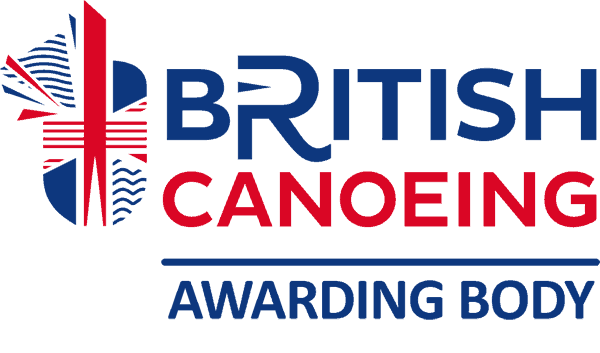This slalom glossary is to support people with different levels of knowledge about canoe slalom to get the most out of the Slalom Technical Progression Guide video series. The glossary is a live document and may be added to or amended from time to time.
Apex of the turn (in relation to staggers and upstreams)
The widest point that the boat reaches before starting to move back in the opposite direction.
Approach angle (in relation to upstreams)
The angle, relative to the gate line, that the boat approaches the gate. Often defined as either an ‘on top’ or ‘shallow’ approach.
Body posture
How the upper body is positioned or moves when the athlete is sat in the boat. A ‘quiet body’ describes considered/limited movement.
Back eddy
An eddy that is moving ‘back’ upstream.
Crabbing
The forward movement of the boat, when the tail is skidding away and isn’t following the same path as the bow. This is the opposite of Tracking.
Downstream momentum
The amount of speed the athlete carries in a downstream direction (as opposed to across the river). Awareness of this is very relevant during Stopper-based manoeuvres.
Downstream edge (as opposed to Upstream)
The edge of the boat that is facing downstream.
Eddy
The area of water behind a significant obstacle in the river, be it mid flow or projecting from the bank. These eddies can have upstream or downstream flow or be stationary.
Eddyline
The transitional line where an eddy meets the downstream flow. These can be sharp and clearly defined, or quite diffused.
Entry pole
The inside pole of an upstream gate.
Fakie
A stroke used in tight staggered sequences by C1 paddlers, where a sweep stroke combined with excessive onside edge is used to lift and rotate the bow upstream before it bounces back to a shallower angle to the gateline.
Features
A generic term that refers to waves and stoppers.
Forward slice
The movement of the blade towards the front of the boat having been rotated, so that it is parallel to the boat.
Horizontal distance (as opposed to down river Vertical distance)
The distance between gates in a staggered sequence when measured across the river.
Inside edge (as opposed to Outside)
The edge of the boat that is closest to the centre of the circle when making a turn.
Inside pole
The pole closest to the centre of the circle when making a turn through a gate.
Lateral orientation of boat
The side to side angle/lean of the boat.
Lines of flow
The direction of movement of the water.
Loading the tail
The action of using the flow, blade and upstream edge of the boat to sink the tail and lift/release the bow.
Offset
Another term for a staggered sequence.
Offside edge (as opposed to Onside)
Used regularly, but not exclusively, in C1 to refer to the edge which is on the opposite side to the blade in the water.
Onside edge (as opposed to Offside)
Used regularly, but not exclusively, in C1 to refer to the edge which is on the same side to the blade in the water.
Outside edge (as opposed to Inside)
The edge of the boat that is furthest away from the centre of the circle when making a turn.
Outside pole
The pole furthest away from the centre of the circle when making a turn through a gate.
Over rotation
The action of rotating the bow of the boat further upstream than necessary, so as to be able to trigger a strong and powerful upstream blade which drives the boat across the river, without losing the original desired direction.
Release the bow
Another term for lifting the bow by ‘loading the tail’.
Reverse ferry glide
Another term for a ‘back off’.
Set
The action of positioning the boat at the appropriate angle across the flow, in advance of using the upstream blade and edge to lift the bow.
Upstream edge (as opposed to Downstream)
The edge of the boat that is facing downstream.
Vertical distance
The downstream distance between gates in a staggered sequence.
Waterline length
The length of boat sat in the water, recognising that this can change depending on how the boat is sat i.e. flat or on its edge.



